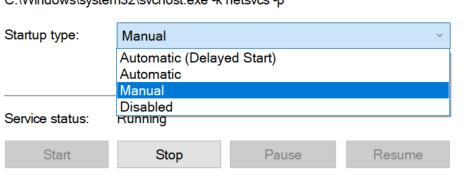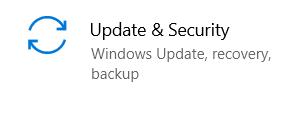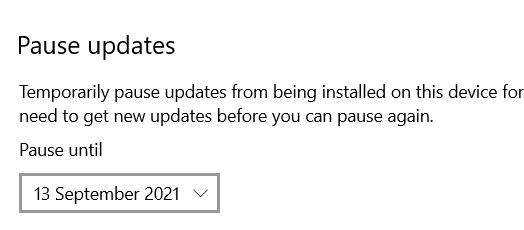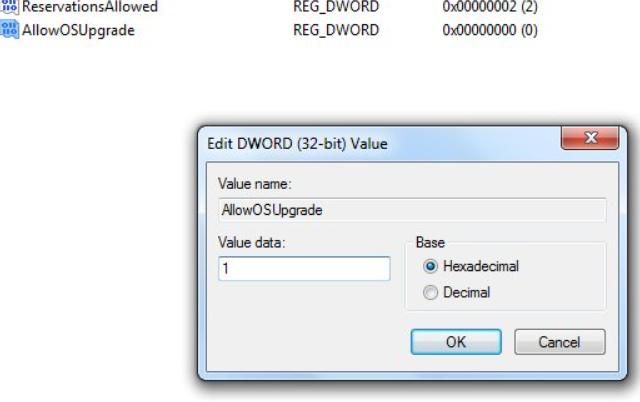Microsoft regularly provides incremental updates that help fixes known bugs in the Windows system. However, it is possible that you may want to temporarily turn off Windows Updates. In this post, we have shared some ways in which you can do exactly that.
Solution One – Disable Windows 10 Update Service
The Windows update process is managed by the Windows update service. This service is set to start with windows. When you start Windows, the Windows update service connects to the Windows update server and checks for new Windows updates.
You can disable this service if you want. This will prevent your computer from connecting to the Windows update server and the Windows update process will stop.
Here are the steps to follow.
- Press Windows key + R simultaneously on the keyboard to bring up the Run command
- In the Run command dialog, type services.msc and click OK
- In the Services window, locate Windows Update service in the list and double click on it. This will open the Windows Update Properties window
- In the Windows Update Properties window, go to the General tab and click Stop in the Service Status section
- Next, find the Startup type option that is located above the Service Status section
- Click the drop-down list and select disabled.
- Click Apply-> OK to save the changes
- Close all windows.
After following this solution, Windows OS will not download updates automatically.
Solution Two – Disable Windows updates via Settings Menu
The Windows settings give you control over how Windows OS functions. You can disable Windows update via the Settings menu. The steps in this solution are simpler than the one discussed above but they are meant to serve as a permanent solution.
Here are the steps to follow.
- Go to your Windows Start button menu and click on the Settings cog
- In the Settings window, click Update and Security
- Next click on Advanced options
- In the Advanced options window, go to the Pause updates section
- Select the date until which you want to turn off Windows updates. This setting allows you to stop windows updates for your device for up to a maximum of 35 days.
- When the 35 days limit gets over, windows will start downloading and installing updates automatically and you need to follow the steps again to stop windows updates for the next 35 days.
Solution Three – Stop Windows updates via Registry
The Registry gives you access to Windows settings that are not generally available through options or menus. However, making changes in the Registry is risky and any wrong changes could make your system unstable. Hence you need to tread cautiously and always make a registry backup.
Here are the steps to stop Windows updates via Registry
- Launch Run dialog box (Press Windows key and R together)
- In the Run dialog box, type regedit and click OK. This will open the Registry hive
- On the left side of the Registry hive, navigate to the following key
- HKEY_LOCAL_MACHINE > SOFTWARE > Microsoft > Windows > CurrentVersion > WindowsUpdate > OSUpgrade
- After you reach the OSUpgrade option, you need to follow the steps given below
- Right-click on the key name and select the New submenu
- Next select DWORD (32-bit) Value. You will see the new value created is named New Value #1. You need to rename as AllowOSUpgrade
- The last step in this solution is to ensure the OS upgrade option is turned off. You can do it by changing the value of AllowOSUpgrade.
- Double-click the AllowOSUpgrade key and change its value to 0. Make sure the hexadecimal option is selected when you make the changes to the value.
- Close the Registry window
Solution Four – Set your Wi-Fi connection as metered connection to Stop Windows update
Many users have an internet connection with data limits on it. If they exceed their data limit, they will have to pay an additional amount. Windows comes with an option called Metered connection that allows you to set any internet connection as Metered connection.
When you set any internet connection as Metered, Windows will not initiate the Windows update process. Here are the steps to set your Wi-Fi connection as Metered connection.
- Click Windows Start and then click on the Settings cog
- In the Settings windows, click Network and Internet
- In the next window, click on the Wi-Fi option in the left side column
- Next, click on Manage known networks
- In the next window, click on your Network icon and click Properties
- In the properties window, scroll down the screen to Set as metered connection
- Click the toggle switch to ON position
- Close all windows
This may not be a perfect solution for users who use Microsoft One Drive. When you set your Wi-Fi connection as metered, OneDrive will not update or backup files from your computer.
Solution Five – Using Group Policy to stop Windows updates
This option is not available for users who have Windows Home Edition installed. Others can use the Group policy to stop windows updates. Here is how you do it.
- Open Run dialog box and type gpedit.msc” and press Enter on the keyboard
- Next, click on Computer Configuration -> Administrative Templates -> Windows Components -> Windows Updates
- Locate Configure automatic updates and double-click it
- Check Disabled
- Click Apply-> OK to apply changes
Should you stop the Windows update?
Windows update keeps your system secure and healthy. There are several threats from different sources that can affect your system’s stability. Windows updates work to plug any security loopholes that might exist in your Windows 10 version.
When you install windows updates, the security patches plug the security vulnerabilities and prevent hackers or people with malicious intent from infecting your PC with malware. Windows updates are also the door to new features that are regularly introduced in Windows 10. Some windows updates are intended to optimize your PC.
When you stop Windows updates, you prevent your system from getting all the good things that can make your Windows 10 a better operating system.








Leave a Reply